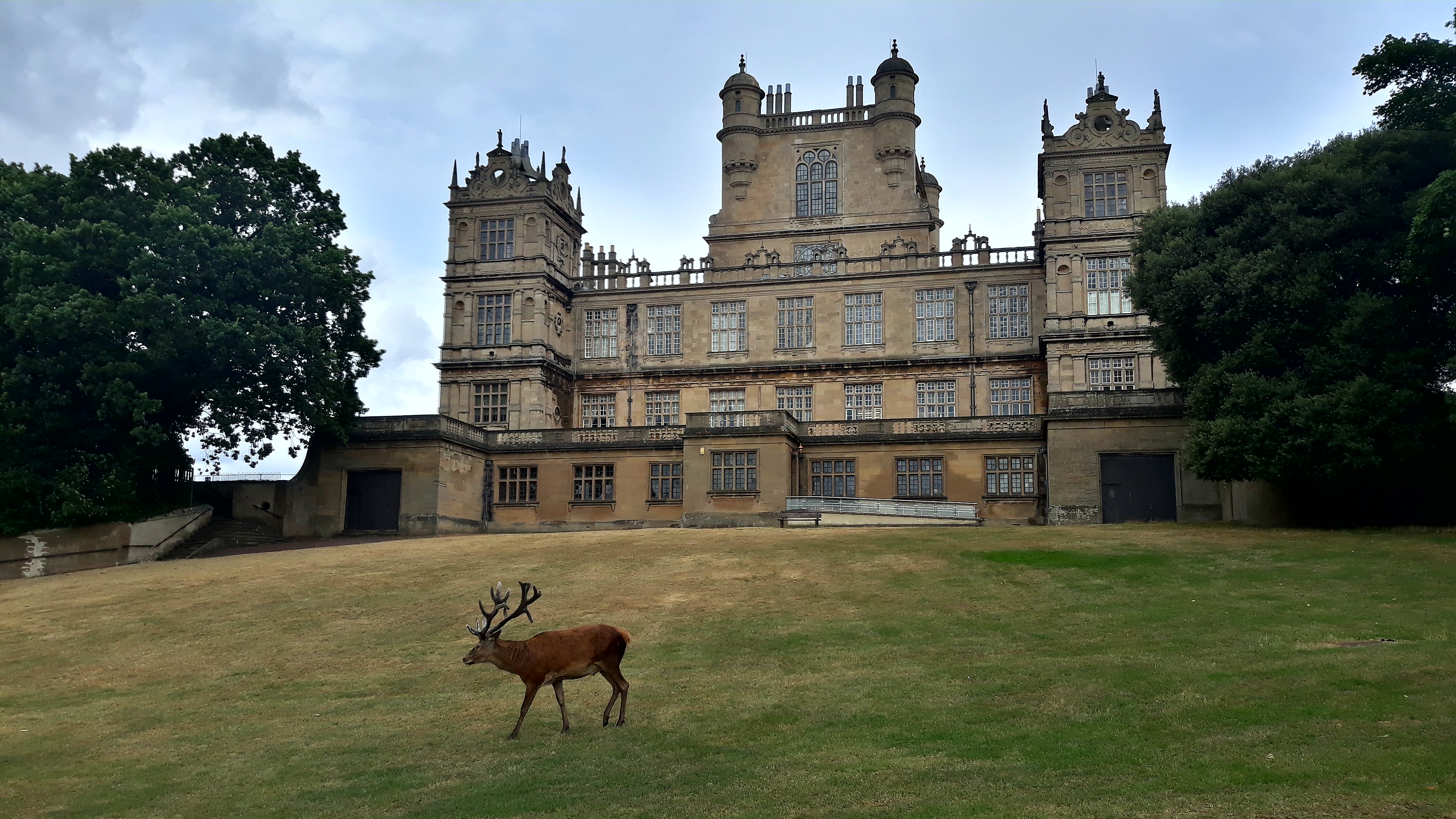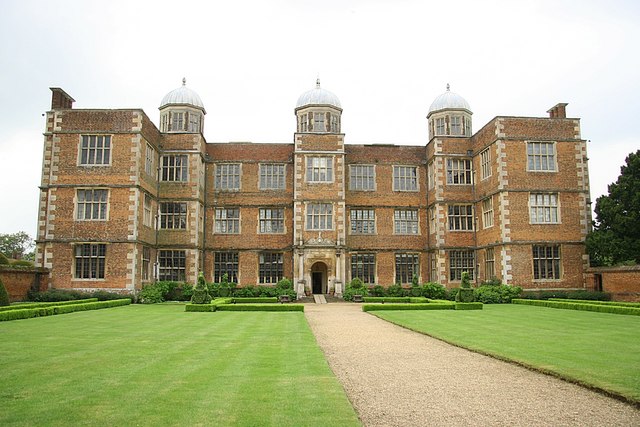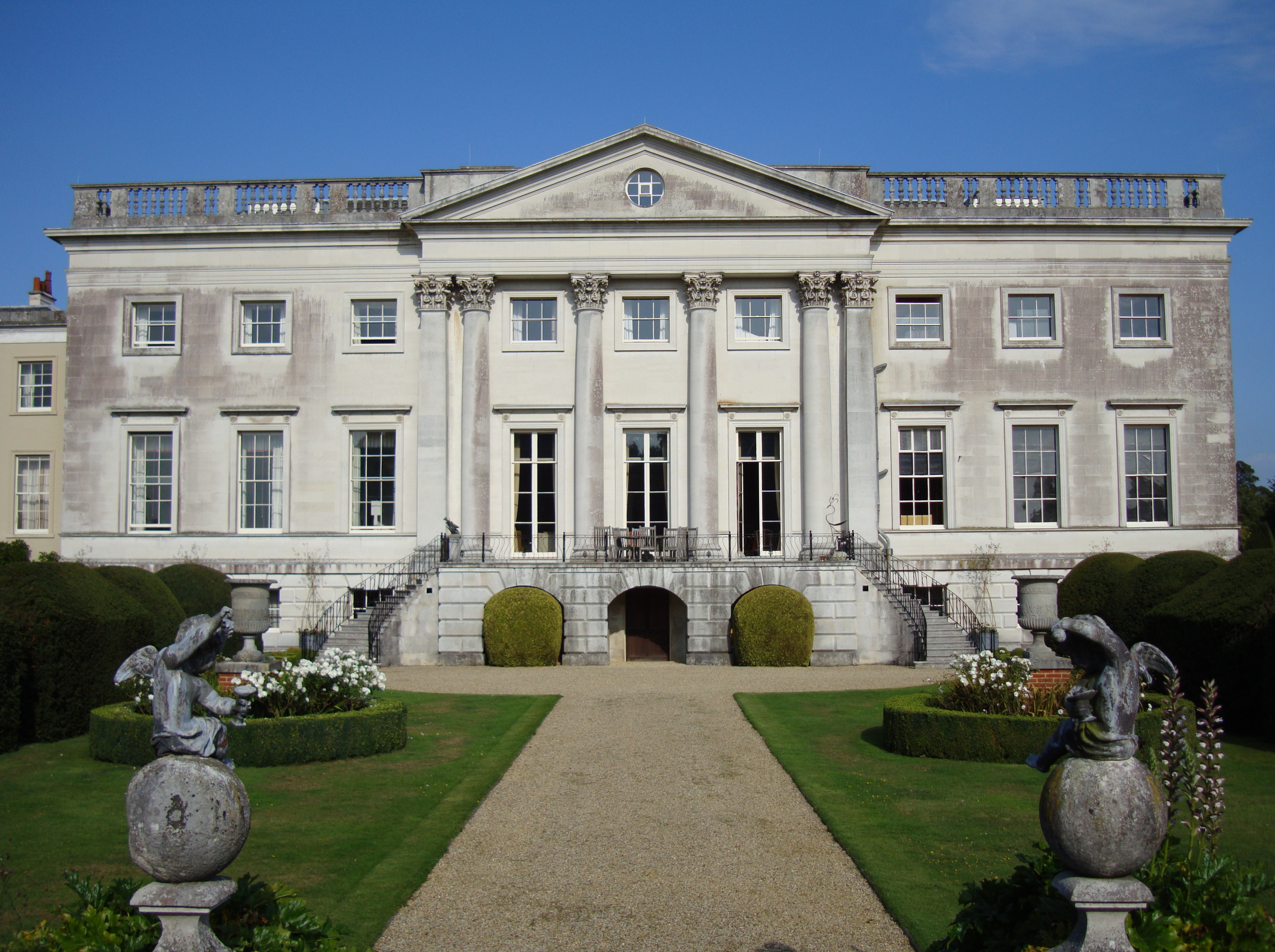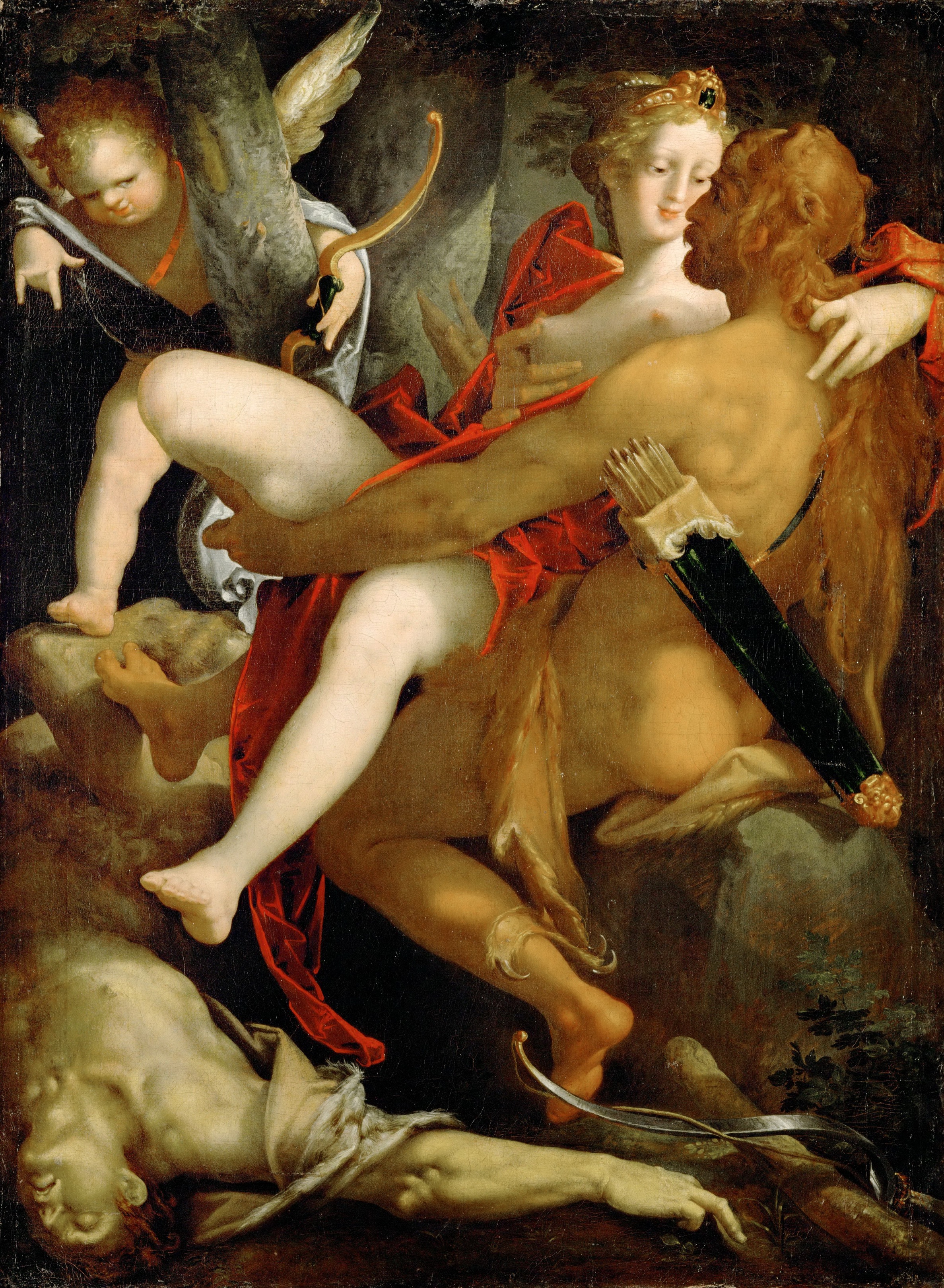|
Prodigy House
Prodigy houses are large and showy English country houses built by courtiers and other wealthy families, either "noble palaces of an awesome scale" or "proud, ambitious heaps" according to taste. The prodigy houses stretch over the periods of Tudor, Elizabethan, and Jacobean architecture, though the term may be restricted to a core period of roughly 1570 to 1620. Many of the grandest were built with a view to housing Elizabeth I and her large retinue as they made their annual royal progress around her realm. Many are therefore close to major roads, often in the English Midlands. The term originates with the architectural historian Sir John Summerson, and has been generally adopted. He called them "...the most daring of all English buildings." The houses fall within the broad style of Renaissance architecture, but represent a distinctive English take on the style, mainly reliant on books for their knowledge of developments on the Continent. Andrea Palladio (1508–1580 ... [...More Info...] [...Related Items...] OR: [Wikipedia] [Google] [Baidu] |
Wollaton Hall Nov2010
Wollaton is a suburb and former parish in the western part of Nottingham, England. Wollaton has two Wards in the City of Nottingham (''Wollaton East and Lenton Abbey'' and ''Wollaton West'') with a total population as at the 2011 census of 24,693. It is home to Wollaton Hall with its museum, deer park, lake, walks and golf course. History The remains of Roman kilns, crematoria and coins have been found in Wollaton. The centre of Wollaton village, the original heart of the suburb, has remained relatively unchanged over the past few hundred years and is dominated by the Admiral Rodney public house and the Anglican church of St Leonard dating back to the 13th century. It also features historic cottages, an Elizabethan dovecote and a water pump. The village was incorporated into the City of Nottingham in 1933, with urban development starting shortly afterwards. Most areas of the former parish were built-up by the end of the 1960s. Geography Wollaton proper is entirely situ ... [...More Info...] [...Related Items...] OR: [Wikipedia] [Google] [Baidu] |
John Summerson
Sir John Newenham Summerson (25 November 1904 – 10 November 1992) was one of the leading British architectural historians of the 20th century. Early life John Summerson was born at Barnstead, Coniscliffe Road, Darlington. His grandfather worked for the Darlington and Stockton Railway and founded the family foundry of Thomas Summerson and Sons in Darlington in 1869. After the premature death of his father, Samuel James Summerson, in 1907, Summerson travelled extensively in England and Europe with his mother Dorothea and then attended a prep school at Riber Castle in Derbyshire before going to Harrow (1918-1922) and the Bartlett School of Architecture at University College London, where he gained a bachelor's degree. Career After graduation Summerson worked in several junior roles, most notably in the office of Sir Giles Gilbert Scott, but architectural practice was not for him and he became a tutor at the Edinburgh College of Art, School of Architecture in 1929. Hired by ... [...More Info...] [...Related Items...] OR: [Wikipedia] [Google] [Baidu] |
Robert Smythson
Robert Smythson (1535 – 15 October 1614) was an English architect. Smythson designed a number of notable houses during the Elizabethan era. Little is known about his birth and upbringing—his first mention in historical records comes in 1556, when he was stonemason for the house at Longleat, built by Sir John Thynne (ca. 1512–1580). He later designed Hardwick Hall, Wollaton Hall, Burton Agnes Hall, and other significant projects. Historically, a number of other Elizabethan houses, such as Gawthorpe Hall and Chastleton House, have been attributed to him on stylistic grounds. In Britain at this time, the profession of architect was in its most embryonic stage of development. Smythson was trained as a stonemason, and by the 1560s was travelling England as a master mason leading his own team of masons. In 1568 he moved from London to Wiltshire to commence work on the new house at Longleat for Sir John Thynne; he worked there for almost eighteen years, carving personally ... [...More Info...] [...Related Items...] OR: [Wikipedia] [Google] [Baidu] |
Doddington Hall, Lincolnshire
Doddington Hall is, from the outside, an Elizabethan prodigy house or mansion complete with walled courtyards and a gabled gatehouse. Inside it was largely updated in the 1760s. It is located in the village of Doddington, to the west of the city of Lincoln in Lincolnshire, England. History Doddington Hall was built between 1593 and 1600 by Robert Smythson for Thomas Tailor, who was a lawyer, the Recorder to the Bishop of Lincoln. It is a grade I listed building. The facade is wide, but the house is only a single room deep at the centre. In the 12th century the manor of Doddington was owned by the Pigot family who sold it to Sir Thomas Burgh in 1450, and eventually to John Savile of Howley Hall in Leeds. In 1593, he sold the manor house to Thomas Tailor who commissioned the present house. It was inherited by his son, and then his granddaughter Elizabeth Anton who married Sir Edward Hussey of Honington in Lincolnshire. Their son Sir Thomas Hussey inherited in 1658. Sir Thomas's ... [...More Info...] [...Related Items...] OR: [Wikipedia] [Google] [Baidu] |
Gentry
Gentry (from Old French ''genterie'', from ''gentil'', "high-born, noble") are "well-born, genteel and well-bred people" of high social class, especially in the past. Word similar to gentle imple and decentfamilies ''Gentry'', in its widest connotation, refers to people of good social position connected to landed estates (see manorialism), upper levels of the clergy, and "gentle" families of long descent who in some cases never obtained the official right to bear a coat of arms. The gentry largely consisted of landowners who could live entirely from rental income, or at least had a country estate; some were gentleman farmers. In the United Kingdom, the term ''gentry'' refers to the landed gentry: the majority of the land-owning social class who typically had a coat of arms, but did not have a peerage. The adjective "patrician" ("of or like a person of high social rank") describes in comparison other analogous traditional social elite strata based in cities, such as free c ... [...More Info...] [...Related Items...] OR: [Wikipedia] [Google] [Baidu] |
Hardwick Hall
Hardwick Hall in Derbyshire is an architecturally significant country house from the Elizabethan era, a leading example of the Elizabethan prodigy house. Built between 1590 and 1597 for Bess of Hardwick, it was designed by the architect Robert Smythson, an exponent of the Renaissance style. Hardwick Hall is one of the earliest examples of the English interpretation of this style, which came into fashion having slowly spread from Florence. Its arrival in Britain coincided with the period when it was no longer necessary or legal to fortify a domestic dwelling. After ownership for centuries by the Cavendish family and the line of the Earl of Devonshire and the Duke of Devonshire, ownership of the house was transferred to the Treasury in 1956 and then to the National Trust in 1959. The building was ruinous and required stabilisation and a subsequent restoration. The Hall is fully open to the public and received 298,283 visitors in 2019. History 16th century Sited on a ... [...More Info...] [...Related Items...] OR: [Wikipedia] [Google] [Baidu] |
Old Gorhambury House
Old Gorhambury House located near St Albans, Hertfordshire, England, is a ruined Elizabethan mansion, a leading and early example of the Elizabethan prodigy house. It was built in 1563–68 by Sir Nicholas Bacon, Lord Keeper, and was visited a number of times by Queen Elizabeth I. It is a Grade I listed building. The house was built partly from bricks taken from the old Abbey buildings at St Albans, then in process of demolition following the Benedictine priory's dissolution some 25 years earlier. It was used as a residence by his youngest son, the polymath (scientist, philosopher, statesman and essayist) Sir Francis Bacon, before being bequeathed by him to his former secretary, Sir Thomas Meautys, who married Anne Bacon, the great-granddaughter of Sir Nicholas. The estate passed in 1652 to Anne's second husband Sir Harbottle Grimston, Master of the Rolls and Speaker in the Convention Parliament of 1660. The estate is owned by the Grimston family to the present day ... [...More Info...] [...Related Items...] OR: [Wikipedia] [Google] [Baidu] |
Theobalds House
Theobalds House (also known as Theobalds Palace) in the parish of Cheshunt in the English county of Hertfordshire, was a significant stately home and (later) royal palace of the 16th and early 17th centuries. Set in extensive parkland, it was a residence of statesmen Lord Burghley and his son, both leading royal advisers. James I enjoyed staying so much he acquired it from the Cecil family, further extending house and park. It was a notable example of the Elizabethan prodigy house, but was demolished as a result of the English Civil War. A new mansion known as The Cedars was built farther to the West in 1763: the house and park were then acquired and the house extended by millionaire brewers the Meux family. London's Temple Bar Gate was preserved and stood in the park from 1880 to 2003, when it was moved back to London. The mansion, which became Middlesex County Council Secondary School and then Theobalds Park College, is now part of a hotel and members club known as Birch; ... [...More Info...] [...Related Items...] OR: [Wikipedia] [Google] [Baidu] |
Court (royal)
A royal court, often called simply a court when the royal context is clear, is an extended royal household in a monarchy, including all those who regularly attend on a monarch, or another central figure. Hence, the word "court" may also be applied to the coterie of a senior member of the nobility. Royal courts may have their seat in a designated place, several specific places, or be a mobile, itinerant court. In the largest courts, the royal households, many thousands of individuals comprised the court. These courtiers included the monarch or noble's camarilla and retinue, household, nobility, clergy, those with court appointments, bodyguards, and may also include emissaries from other kingdoms or visitors to the court. Prince étranger, Foreign princes and foreign nobility in exile may also seek refuge at a court. Near East, Near Eastern and Far East, Far Eastern courts often included the harem and Concubinage, concubines as well as eunuchs who fulfilled a variety of functions. ... [...More Info...] [...Related Items...] OR: [Wikipedia] [Google] [Baidu] |
Bristol
Bristol () is a city, ceremonial county and unitary authority in England. Situated on the River Avon, it is bordered by the ceremonial counties of Gloucestershire to the north and Somerset to the south. Bristol is the most populous city in South West England. The wider Bristol Built-up Area is the eleventh most populous urban area in the United Kingdom. Iron Age hillforts and Roman villas were built near the confluence of the rivers Frome and Avon. Around the beginning of the 11th century, the settlement was known as (Old English: 'the place at the bridge'). Bristol received a royal charter in 1155 and was historically divided between Gloucestershire and Somerset until 1373 when it became a county corporate. From the 13th to the 18th century, Bristol was among the top three English cities, after London, in tax receipts. A major port, Bristol was a starting place for early voyages of exploration to the New World. On a ship out of Bristol in 1497, John Cabot, a Venetia ... [...More Info...] [...Related Items...] OR: [Wikipedia] [Google] [Baidu] |
Worcester, England
Worcester ( ) is a cathedral city in Worcestershire, England, of which it is the county town. It is south-west of Birmingham, north-west of London, north of Gloucester and north-east of Hereford. The population was 103,872 in the 2021 Census. The River Severn flanks the western side of the city centre. It is overlooked by Worcester Cathedral. Worcester is the home of Royal Worcester Porcelain, composer Edward Elgar, Lea & Perrins, makers of traditional Worcestershire sauce, the University of Worcester, and '' Berrow's Worcester Journal'', claimed as the world's oldest newspaper. The Battle of Worcester in 1651 was the final battle of the English Civil War, during which Oliver Cromwell's New Model Army defeated King Charles II's Royalists. History Early history The trade route past Worcester, later part of the Roman Ryknild Street, dates from Neolithic times. It commanded a ford crossing over the River Severn, which was tidal below Worcester, and fortified by the ... [...More Info...] [...Related Items...] OR: [Wikipedia] [Google] [Baidu] |
Northern Mannerist
Northern Mannerism is the form of Mannerism found in the visual arts north of the Alps in the 16th and early 17th centuries. Styles largely derived from Italian Mannerism were found in the Netherlands and elsewhere from around the mid-century, especially Mannerist ornament in architecture; this article concentrates on those times and places where Northern Mannerism generated its most original and distinctive work. The three main centres of the style were in France, especially in the period 1530–1550, in Prague from 1576, and in the Netherlands from the 1580s—the first two phases very much led by royal patronage. In the last 15 years of the century, the style, by then becoming outdated in Italy, was widespread across northern Europe, spread in large part through prints. In painting, it tended to recede rapidly in the new century, under the new influence of Caravaggio and the early Baroque, but in architecture and the decorative arts, its influence was more sustained. Backg ... [...More Info...] [...Related Items...] OR: [Wikipedia] [Google] [Baidu] |





.jpg)



